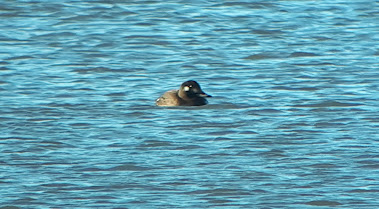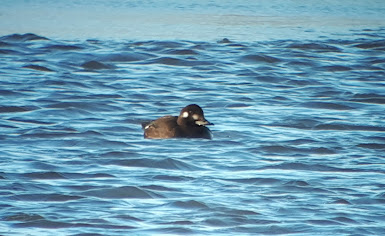January 2021 was a tough month and I am glad it is over.
Following a gruelling but lovely Mike Clegg Bird Race which showed what can be found within a cycle ride of home (Green-winged Teal anyone?!) another full national lockdown was imposed. The UK reached the grim milestone of 100,000 deaths due to Covid since the pandemic began, a staggering figure masking the true horror and suffering those individuals endured and the legacy of pain left with their familes and friends, not to mention the exhaustion and stress of all those who cared for them as they neared the end.
The kids went back to school, adding additional pressure to our working day and a lot of anxiety about their happiness and wellbeing. They miss their friends immensely. With the first review of our imprisonment set for the distant date of 8th March, spring seemed a long, long way away. Even I began to feel a bit dis-spirited.
Unlike the first lockdown back in spring 2020, dreary cold weather kept us largely inside during January and when we did venture out, deep flooding along the Ouse reduced the walks available locally. Nevertheless, as usual, nature provided lots of colour and inspiration and a glimmer of better times to come. Towards the end of the month, the BBC's Winterwatch lifted all of our spirits with the wonders of wildlife from around the UK.
After a pair of gorgeous Bullfinches graced the garden in the first week of the month, a female Blackcap, presumably from Germany, spent most of her time in and around the feeders. She favoured sunflower hearts (to my surprise) and was last seen on the 29th, having brightened many of my days staring out of window whilst working from home. I will keep a beady eye out, to see if she reappears before the winter is out. It would be nice to see her again to wish her well.
A few miles away, the first Siberian Lesser Whitethroat for York turned up on Adam Firth's feeder in Elvington, somewhat eclipsing my Blackcap! This bird was ringed and after a lot of patience and effort, Adam managed to confirm the ring number. It turned out that Will Scott had trapped this bird at Bempton in October and he had a nice in-hand photo to boot! Absolutely brilliant. Of course, the lockdown meant I couldn't pay homage. Nevermind...
Wandering around the local area through occasional snow and frequent rain yielded a Green Woodpecker on Acaster Airfield, a smart Little Owl and a fine flock of Redpolls at Naburn.
The floodwater on Acaster Church Ings proved a bit deep for most ducks, though held a handful of Goosanders, two Pochards, up to a dozen Gadwalls and a few Wigeon and Teal. A pair of handsome Pintail were present on a couple of occasions with a male Shoveler the highlight.
By the end of the month, the days were noticeably longer and nature's volume had noticeably increased to about a 3. I heard my first Blackbird singing on the 11th, which was quite early really and yesterday morning, Dunnocks, Great Tits and Song Thrushes were all joining in. The local Woodpigeons, Starlings and Coal Tits have all been tuning up too, when the sun comes out. Right on cue for the RSPB's Big Garden Birdwatch, the pair of Bullfinches, having been absent since the first week of the month, showed up and got themselves on the list!
So, February has arrived, the last and shortest month of winter. With early signs of spring all around, there is much to look forward to, not least the decline of Covid and the easing of restrictions. Hopefully the floods will have reduced by the end of the month and we will be able to access the LDV again, with our new found freedom.
I read on Twitter this morning that Swallows, House Martins (pic below Ron Knight) and White Storks are coming in from Africa across the Straits of Gibralter right now. I better get my Swift nestboxes in position!
Keep the faith, folks, little by little, Spring is coming!








































